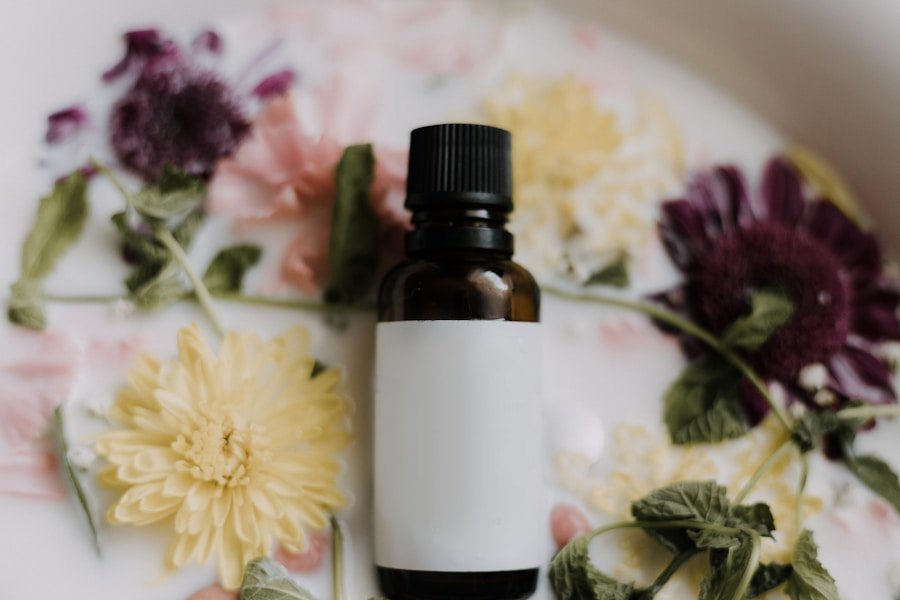Herbal plants have been utilized for centuries as natural remedies for a diverse range of health conditions and ailments. The advantages of using herbal plants for healing are extensive and varied, making them an appealing option for individuals seeking natural and holistic approaches to healthcare. One of the primary benefits of herbal plants is their ability to provide relief from common health issues such as headaches, digestive problems, and skin conditions.
For instance, ginger has been traditionally used to alleviate nausea and indigestion, while aloe vera is renowned for its soothing properties in treating sunburns and other skin irritations. Moreover, herbal plants can also be used to support overall health and wellness, as many plants contain potent antioxidants and anti-inflammatory compounds that can help boost the immune system and protect against chronic diseases. Furthermore, herbal plants offer a more sustainable and environmentally friendly approach to healthcare, as they can often be cultivated and harvested locally, reducing the need for transportation and packaging associated with pharmaceutical drugs.
This not only minimizes the carbon footprint of healthcare but also supports local economies and promotes a deeper connection to the natural world. Additionally, many herbal plants can be easily grown at home, enabling individuals to take control of their own health and well-being. This accessibility and self-sufficiency are empowering for many individuals, as it allows them to take a more active role in their healthcare and reduce their reliance on conventional medicine.
Key Takeaways
- Herbal plants have the potential to provide natural remedies for various health conditions.
- Traditional medicine has long harnessed the healing power of herbal plants for treating illnesses and promoting wellness.
- Holistic healing approaches recognize the potential benefits of herbal plants in addressing physical, mental, and emotional health.
- Herbal medicine offers therapeutic potential through the use of plant-based remedies for healing and maintaining health.
- Integrative medicine examines the role of herbal plants in healing and wellness, combining traditional and modern approaches for optimal health outcomes.
Traditional Medicine: Harnessing the Healing Power of Herbal Plants
Recognizing the Therapeutic Properties of Plants
Traditional medicine systems such as Ayurveda, Traditional Chinese Medicine, and Indigenous healing practices have long recognized the potential benefits of herbal plants for healing. These ancient healing systems have developed a deep understanding of the therapeutic properties of various plants and have used them to treat a wide range of health conditions for centuries. For example, in Ayurveda, herbs such as ashwagandha and turmeric are used to support overall vitality and well-being, while in Traditional Chinese Medicine, herbs like ginseng and astragalus are used to boost energy and strengthen the immune system.
A Holistic Approach to Healing
These traditional medicine systems also emphasize the importance of treating the root cause of illness rather than just addressing symptoms, making them a holistic and comprehensive approach to healing. In addition to their therapeutic properties, herbal plants are often used in traditional medicine systems for their energetic and spiritual qualities. Many plants are believed to have specific energetic properties that can help to balance the body and mind, as well as connect individuals to the natural world and the spiritual realm.
The Interconnectedness of Body, Mind, and Spirit
For example, in Indigenous healing practices, plants such as sage and cedar are used in purification rituals to cleanse the energy of a space and promote spiritual healing. This holistic approach to healing recognizes the interconnectedness of the body, mind, and spirit, and highlights the potential benefits of herbal plants for promoting overall health and wellness.
Holistic Healing: Understanding the Potential Benefits of Herbal Plants
Holistic healing approaches aim to address the whole person – body, mind, and spirit – in order to promote overall health and wellness. Herbal plants play a key role in holistic healing practices, as they offer a natural and gentle way to support the body’s innate healing abilities. One of the potential benefits of using herbal plants for holistic healing is their ability to promote balance and harmony within the body.
Many herbal plants contain compounds that can help to regulate various bodily systems, such as the endocrine system, immune system, and nervous system, helping to restore equilibrium and promote overall well-being. Furthermore, herbal plants can also be used to support mental and emotional health, offering relief from stress, anxiety, and depression. Plants such as lavender, chamomile, and passionflower are known for their calming and sedative properties, making them valuable allies for promoting relaxation and emotional balance.
In addition, many herbal plants have adaptogenic properties, meaning they can help the body adapt to stress and support resilience in the face of challenging circumstances. This makes them valuable tools for promoting mental and emotional resilience in today’s fast-paced and demanding world.
Herbal Medicine: Exploring the Therapeutic Potential of Plant-Based Remedies
| Potential Benefits of Using Herbal Plants for Healing |
|---|
| 1. Natural Healing |
| 2. Fewer Side Effects |
| 3. Cost-Effective |
| 4. Accessible |
| 5. Traditional Knowledge Preservation |
| 6. Sustainable and Environmentally Friendly |
Herbal medicine is a diverse and dynamic field that encompasses a wide range of plant-based remedies for promoting health and wellness. The therapeutic potential of herbal medicine is vast, with countless plants offering unique benefits for various health conditions. One of the key benefits of herbal medicine is its ability to provide personalized and individualized care, as different plants may be more suitable for different individuals based on their unique constitution and health needs.
This personalized approach allows for a more tailored and effective treatment plan, addressing the specific needs of each individual rather than offering a one-size-fits-all solution. Furthermore, herbal medicine offers a more gentle and natural approach to healing compared to conventional pharmaceutical drugs. Many pharmaceutical drugs come with a long list of potential side effects and risks, whereas herbal medicine is generally considered to be safer and more gentle on the body.
This makes it a particularly attractive option for those seeking natural and holistic approaches to healthcare, especially for chronic conditions that may require long-term treatment. Additionally, herbal medicine often focuses on addressing the root cause of illness rather than just managing symptoms, making it a comprehensive and sustainable approach to promoting long-term health and wellness.
Herbal Healing: Uncovering the Health Benefits of Medicinal Plants
The health benefits of medicinal plants are vast and varied, with countless plants offering unique therapeutic properties for promoting overall well-being. One of the key benefits of using medicinal plants for healing is their ability to provide relief from common ailments such as pain, inflammation, and digestive issues. For example, plants such as turmeric, ginger, and boswellia are known for their anti-inflammatory properties, making them valuable allies for promoting joint health and reducing pain and swelling.
Additionally, plants such as peppermint, fennel, and chamomile are known for their digestive properties, helping to soothe indigestion, bloating, and other gastrointestinal issues. Furthermore, medicinal plants can also be used to support specific organ systems within the body, offering targeted support for various health conditions. For example, plants such as milk thistle and dandelion root are known for their liver-supportive properties, helping to detoxify and protect the liver from damage.
Similarly, plants such as hawthorn berry and garlic are known for their cardiovascular-supportive properties, helping to promote heart health and reduce the risk of cardiovascular disease. This targeted approach allows for more comprehensive and effective support for specific health concerns, addressing the underlying imbalances within the body.
Integrative Medicine: Examining the Role of Herbal Plants in Healing
The Role of Herbal Plants in Integrative Medicine
Herbal plants play a significant role in integrative medicine, offering a natural and holistic approach to promoting health and wellness that complements conventional medical treatments. By incorporating herbal plants into treatment plans, healthcare providers can reduce the side effects of conventional treatments, such as chemotherapy or radiation therapy.
Herbal Plants in Cancer Treatment and Recovery
Many herbal plants have been shown to have protective effects on healthy cells while enhancing the effectiveness of cancer treatments. This makes them valuable allies in supporting individuals undergoing cancer treatment. Additionally, herbal plants can be used to support recovery from surgery or injury, helping to reduce inflammation, pain, and promote tissue repair. Plants such as arnica, comfrey, and calendula are known for their wound-healing properties, making them valuable allies for promoting recovery after surgery or trauma.
Adaptogenic Properties and Overall Well-being
Many herbal plants have adaptogenic properties that can help to support individuals during times of stress or illness, promoting resilience and overall well-being. This integrative approach allows for a more comprehensive and personalized treatment plan that addresses the specific needs of each individual while minimizing potential side effects from conventional treatments.
Herbal Remedies: Exploring the Potential Benefits for Health and Wellness
Herbal remedies offer a natural and gentle approach to promoting health and wellness that can benefit individuals of all ages and backgrounds. One of the key benefits of using herbal remedies is their ability to provide relief from common ailments such as colds, flu, allergies, and respiratory infections. Plants such as elderberry, echinacea, and garlic are known for their immune-supportive properties, helping to boost the body’s natural defenses against pathogens and reduce the severity and duration of illness.
Additionally, many herbal remedies can also be used to support respiratory health, offering relief from coughs, congestion, and other respiratory symptoms. Furthermore, herbal remedies can also be used to support women’s health throughout various stages of life, offering relief from menstrual cramps, menopausal symptoms, and hormonal imbalances. Plants such as black cohosh, chaste tree berry, and red raspberry leaf are known for their hormone-balancing properties, making them valuable allies for promoting women’s health.
Additionally, many herbal remedies can also be used to support fertility and pregnancy by providing essential nutrients and supporting reproductive function. This comprehensive approach allows for more personalized care that addresses the specific needs of each individual while promoting overall health and wellness. In conclusion, the potential benefits of using herbal plants for healing are vast and varied, offering a natural and holistic approach to promoting health and wellness that complements conventional medical treatments.
From traditional medicine systems to integrative medicine approaches, herbal plants play a significant role in supporting overall well-being by providing relief from common ailments, supporting specific organ systems within the body, promoting mental and emotional health, reducing side effects from conventional treatments, supporting recovery from surgery or injury, promoting women’s health throughout various stages of life, supporting fertility and pregnancy by providing essential nutrients while addressing specific needs of each individual. With their gentle yet powerful therapeutic properties, herbal plants offer a sustainable and environmentally friendly approach to healing that empowers individuals to take control of their own health while reducing their reliance on conventional medicine. As our understanding of the potential benefits of herbal plants continues to grow through scientific research and traditional wisdom alike we can expect an increasing integration into mainstream healthcare practices around the world.
FAQs
What are herbal plants?
Herbal plants are plants that are used for their medicinal properties. They have been used for centuries in various cultures to treat a wide range of health conditions.
What are the potential benefits of using herbal plants for healing?
Using herbal plants for healing can have several potential benefits, including natural and holistic treatment options, fewer side effects compared to synthetic medications, and the potential to support the body’s natural healing processes.
What are some commonly used herbal plants for healing?
Some commonly used herbal plants for healing include aloe vera, ginger, turmeric, garlic, chamomile, and peppermint. These plants have been used for their medicinal properties in traditional medicine systems around the world.
Are there any potential risks or drawbacks to using herbal plants for healing?
While herbal plants can offer many benefits, there are also potential risks and drawbacks to consider. These may include allergic reactions, interactions with other medications, and variability in the quality and potency of herbal products.
How are herbal plants typically used for healing?
Herbal plants can be used for healing in various forms, including teas, tinctures, capsules, and topical preparations such as ointments and creams. They can also be used in cooking and as essential oils for aromatherapy.







3 Comments